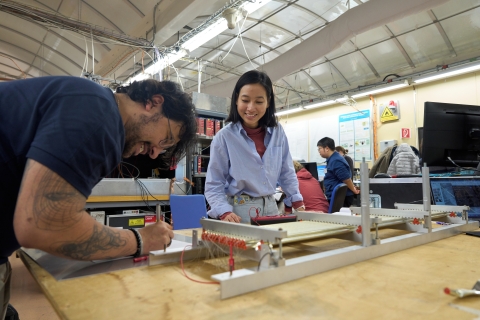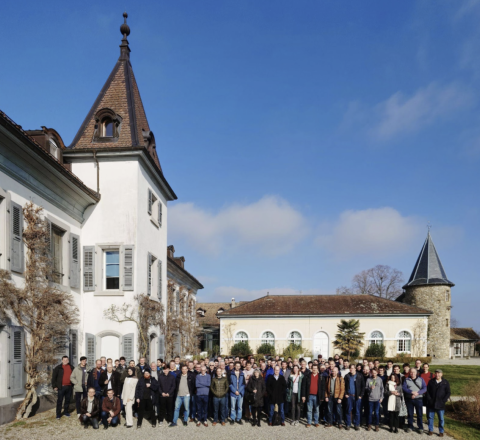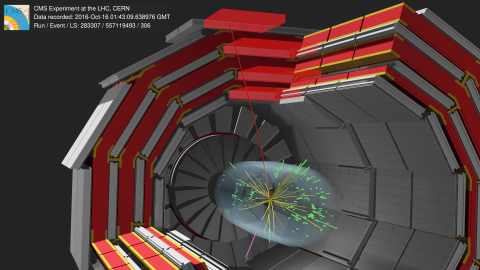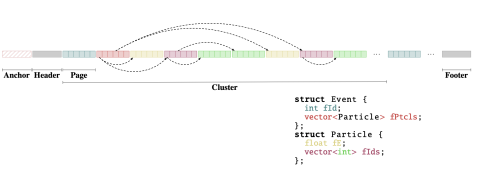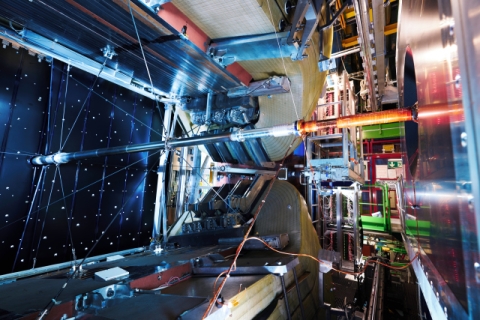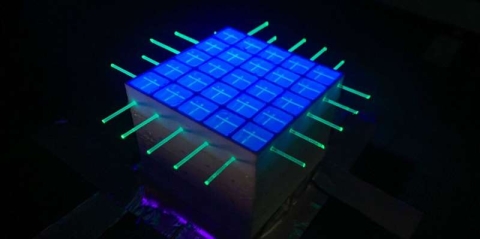January 2025 - March 2025
Theory and practice join at the DRD1 Gaseous Detectors School
How do wire-based detectors compare to Resistive Plate Chambers? What are the performances of MicroPattern Gaseous Detectors? Which gas mixtures should be chosen for optimised operation? How will detectors face the challenges of future, more…
Read moreThird DAQ@LHC workshop
After a (too) long hiatus the LHC DAQ teams found themselves together for three days in the beautiful and study-friendly atmosphere of Chateau de Bossey to discuss experiences in Run3, plans for the post-LS3 systems and technological developments…
Read moreCMS Achieves LHC's Most Precise W boson Mass Measurement Yet
The first measurement of the W boson mass (mw) performed by the CMS Collaboration was announced in September 2024. This result has been long-awaited—the first LHC measurement of mW, by the ATLAS Collaboration, was shown nearly 7 years ago. In the…
Read moreRNTuple: The New Columnar Storage for HEP Data
R&D activities are vital for the ROOT project. A few years ago, we started investigating the evolution of TTree, ROOT’s columnar format with which more than two exabytes of data were written at the LHC: experiments write data, lots of it, to…
Read moreNew Milestones in direct CP Violation: Observation in Baryons and First Evidence in Beauty Mesons to J/Psi
A Milestone in Understanding the Matter-Antimatter Asymmetry The LHCb collaboration has announced a groundbreaking achievement: the first-ever observation of CP violation in baryon decays. This result, presented at the Rencontres de Moriond EW…
Read moreNeutrinos Make Their Mark in the North Hall
One of the conclusions from the ESPPU 2013 process was that CERN should actively engage in the global accelerator-based neutrino program. As a result, CERN became involved in various initiatives, including the DUNE project, and took a leading role…
Read moreUpdates from the ISOLDE Solenoidal Spectrometer
The field of nuclear physics is well into its second century. From its initial experiment bombarding a gold foil with alpha particles, experimental techniques have become more sophisticated to keep pace with the technology and innovation that has…
Read moreInnovative Scintillator Detector Technologies
Plastic scintillator detectors are cost-effective and benefit from a very fast response as well as the possibility to easily shape their geometry. Thus, their deployment is a standard in most of the particle physics experiments. Although their…
Read more
